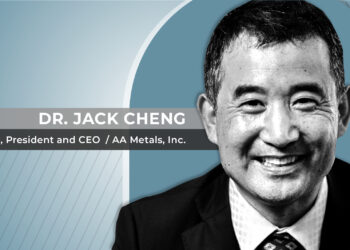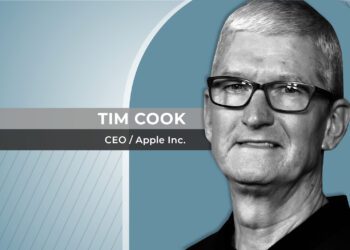As the market changes with revolutionary technologies, Cisco stays on top under the leadership of Senior VP Rebecca Jacoby.
Speed and adaptability are increasingly becoming key measurements of manufacturing and business scale for technology companies such networking giant Cisco, as customer success-centered processes demand faster than ever business decisions, says the company’s Senior Vice President of Operations Rebecca Jacoby.
The company, a veteran of the Fortune 500 list with US$49 billion in revenues during fiscal year 2016, is facing the unstoppable technological change of the last decades with a focus on maximizing the value of its partnerships as an integral part of the value chain and delivering the right information at the right time, she adds.
As the market changes with the advent of revolutionary technologies such as cloud and mobile cloud computing and storage, Jacoby says that scale and a firm grasp of the complexities of a supply chain have become more important than ever. “The rise of the cloud has put pressure on Cisco to expand beyond its legacy networking gear business, which still brings in billions of dollars each quarter,” says the Fortune 500 entry on the company.
“Everything has to do with scale, so the core thing that we need to deliver on is scale,” says Jacoby, a Cisco insider with over 22 years of experience in the company, mostly on the supply chain side of the business. “The reality is that there are capabilities that need to be improved or adapted to operate in a customer success model.”
Also, in the current interconnected business environment, “there is an underlying need of speed. In addition to the traditional definition of scale, including efficiency and value, the new elements are speed and adaptability,” she adds.
Fast and useful
Getting the right information to the right people at the right time “in the fastest possible motion… is the ultimate thing that you want to do fast if you want to get value to your customers as quickly as humanly possible.”
But speed is only a part of the equation. People –including partners, employees and customers– need to be able to incorporate that influx of data and information naturally into their own activities. “You can use technology to a certain extent, but this is change and people are notoriously uncomfortable with change, so you have to blend it into their normal flow of business. That is super high-value and at our scale it has to be done digitally.”
The reach of that information sharing model goes even inward, she mentions, from customer support staff taking service calls from clients, for example, and in turn providing development engineers with actionable data on how to improve Cisco’s product and service offerings.
“The corollary to speed is that Operations needs to use technology and other methodologies in order to be very flexible and adaptable,” she adds.
A history in chain supply
Jacoby, a Bruce Springsteen fan that has confessed to organize family holidays around “The Boss” touring schedule, has held several positions in the company since joining in 1995, when she had already started developing a name for herself in Silicon Valley operations. Her expertise has centered mostly around operations, manufacturing and supply chain as well as IT, which eventually lead to her induction as the company’s Chief Information Officer (CIO), a role which earned her a “Superstar” CIO recognition by Forbes in 2012 and an induction to the CIO Magazine Hall of Fame in 2015. Chuck Robbins, the company’s CEO, invited her to take on a broader operational role as a senior VP a year and a half ago, Jacoby says. The role includes the improvement of operational performance, the development of profitable growth strategies and has oversight over supply chain, IT, customer and partner services and procurement.
On the subject of leadership, the phrase “transformational change” arises frequently in conversation with the executive. She says evolving with the company as it grew into one of the largest globally in its business took a lot of looking into things and processes and how they could perform better.
“We really made an effort strategically to use our own technology and the internet for our supply chain and e-commerce in a time when there were no standards, no rules, no companies doing what we wanted them to do. I ended up having the planning role when we were driving those changes in the fundamental way we were doing business in the supply change. I also somehow ended up having added to my responsibilities the teams that applied IPF (Intelligent Plant Framework) into our manufacturing,” she explains. “It turned out to be a tipping career point for me.”
Jacoby is amazed by the pace of technological change in the last decades, from the advent of user friendly user interfaces such as Windows to e-commerce, and their influence in the business environment. “With e-commerce it was the first time that it was really obvious that technology changes were driving business model changes, and by business model I mean the fundamental operational processes that you need to run a business, not just commercial or HR processes but development and innovation cycles. Customer care and engagement models and those types of things were drastically changed by e-commerce.”
But the evolution has not stopped. Big Data and the Internet of Things (IoT) for example, are also changing the interaction with partners, customers and final users in ways not imagined before.
“I think the network plays a really critical role on that, as well as some other technologies like security and collaboration technologies. The opportunities for us come from being a very large company with a very broad set of solutions, and the trick is going to be to simplify and still create a competitive advantage through this idea of customer success. How do we focus on customer success and how do we use digital technology and data and do that better than anyone else? For me that is the North Star of what the opportunity is for us and for me.”












